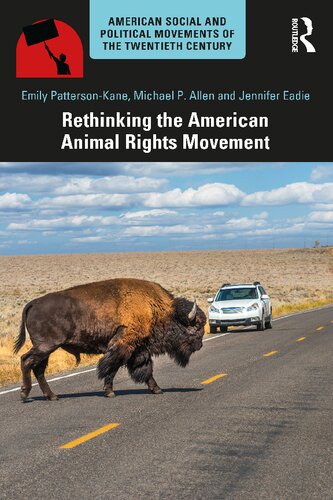

Most ebook files are in PDF format, so you can easily read them using various software such as Foxit Reader or directly on the Google Chrome browser.
Some ebook files are released by publishers in other formats such as .awz, .mobi, .epub, .fb2, etc. You may need to install specific software to read these formats on mobile/PC, such as Calibre.
Please read the tutorial at this link. https://ebooknice.com/page/post?id=faq
We offer FREE conversion to the popular formats you request; however, this may take some time. Therefore, right after payment, please email us, and we will try to provide the service as quickly as possible.
For some exceptional file formats or broken links (if any), please refrain from opening any disputes. Instead, email us first, and we will try to assist within a maximum of 6 hours.
EbookNice Team

Status:
Available4.5
41 reviewsAlong with Civil Rights and Women’s liberation, Animal Rights became one of leading social moments of the twentieth century. This book critically reviews all principal contributions to the American animal rights debate by activists, campaigners, academics, and lawyers, while placing animal rights in context with other related and competing movements.
Rethinking the American Animal Rights Movement examines the strategies employed within the movement to advance its goals, which ranged from public advocacy and legal reforms to civil disobedience, vigilantism, anarchism, and even ‘terrorism.’ It summarizes key theoretical and legal frameworks that inspired those strategies, as well as the ideological motivations of the movement. It highlights the irreconcilable tension between moral and legal rights verses ‘humane treatment of animals’ as prescribed by advocates of animal welfarism. The book also looks back to the nineteenth century origins of the movement, examining its appeal to a sentimentalist conception of rights standing in marked contrast with twentieth century rights theory. After providing an extensive social history of the twentieth century movement, the book subsequently offers a diagnosis of why it stalled at the turn of millennium in its various efforts to advance the cause of nonhuman animals. This diagnosis emphasizes the often-contradictory goals and strategies adopted by the movement in its different phases and manifestations across three centuries.
The book is unique in presenting students, activists, and scholars with a history and critical discussion of its accomplishments, failures, and ongoing complexities faced by the American animal rights movement.